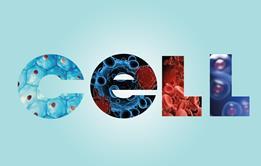Use these strategies to help your students overcome any literacy challenges

For many of students, science seems like a foreign language and so, in truth, it is. However, the total removal of technical language may improve accessibility at the cost of losing the rich meaning embedded in it, and the kudos that goes with mastering it. As teachers we need to assess the balance between accessibility and challenge, and this may vary from topic to topic, as well as ensuring students have a solid grasp of the key vocabulary required for assessments. The first step is to differentiate between key technical, desirable and optional vocabulary.
Improving technical language acquisition
There are a number of practical strategies teachers use to enhance the accurate acquisition of target vocabulary. The first is rehearsal. Students will become confident in what they regularly see, hear and say. This is the basis of a ‘word wall ’. Be careful though, the wall won’t teach students; they need regular and active engagement with the key vocabulary.
Pictograms are one way of achieving this. Students write keywords in such a way that the letters are made of images (see the example of the word ‘cell’ ). The act of considering what imagery is appropriate and how it can be made to create the outline of the letters lends powerful consolidation to students’ learning, and a lovely wall display to boot!
Another possible activity is vocabulary bingo, where students are asked to write down the technical words associated with a topic in a grid (they can be taken from your word wall) and cross them off as they are spoken during the lesson. If students choose to improve their score by using the words on their grid in their own speech, it will enhance their use of the target vocabulary.
One pictorial approach that helps students connect the technical language associated with experiments is the use of integrated instructions, in which the text is clearly linked to individual parts of a diagram and stages in the procedure. The technique could be viewed as a way of scaffolding the acquisition of vocabulary by supporting with relevant illustrations. Students who struggle to equate a scientific diagram to a piece of apparatus may find it helpful to use photographic instructions using an Aurally Coded English (ACE) spelling dictionary (see below).
Using the ACE dictionary
The ACE dictionary can transform a student’s ability to spell words correctly and look them up successfully. It helps students who cannot use a standard dictionary because they don’t recognise the inconsistencies in English spelling. The dictionary comes in two editions: one suitable for the lower secondary phase of education and the other for older students and adults. Both require the student to identify three features of a word:
- The letter they think it starts with (the dictionary ‘corrects’ for common mistakes).
- The first vowel sound. In the standard ACE Spelling Dictionary, vowels are represented in the index by an animal. For example, a long ‘e’ (an ‘ee’ sound) is represented by an eagle. The Advanced ACE Spelling Dictionary uses colour names instead, so a long ‘e’ is represented by the colour green.
- The number of syllables in a word, or claps when a word is spoken.
The example shown is for the spelling of ‘chemistry ’ – the silent ‘h’ may prevent some students from finding it in a standard dictionary. The student may think it starts with a ‘k’, quite legitimately. The ‘e’ is short, as in ‘elephant’. Using the index, we are directed to page 42, where we look for a three-star, or high-frequency, word. Having not seen anything that looks correct in the *** column, we are directed to pages 33 or 47. Page 33 contains the word we were looking for.
Although this may seem to be a slightly tortuous process, it is remarkably successful and well liked by students who struggle with spelling. It often gives them the confidence that precedes a greater engagement with writing.
Analysing morphographs is another effective way of improving students’ understanding of technical words and their accurate spelling of them. Students identify morphographs – word bases, prefixes and suffixes – as a spelling strategy to create new words. By recognising the constituent parts of a word, students can grasp its meaning and spell it correctly. For example, ‘chrom’ means colour and ‘graph(y)’ denotes writing. Hence, chromatography means ‘colour writing’.
None of these strategies will provide a one-stop means to improved technical vocabulary. However, a combination of the strategies, used repeatedly over time, will be effective. More importantly, you will not only be enhancing students’ vocabulary, your efforts also will stretch their understanding of the concepts embedded in the words.

Supporting diverse learners

How to boost students’ acquisition of technical language in the science classroom
 Currently
reading
Currently
reading
Improve literacy for all
- 2
- 3
- 4




















No comments yet